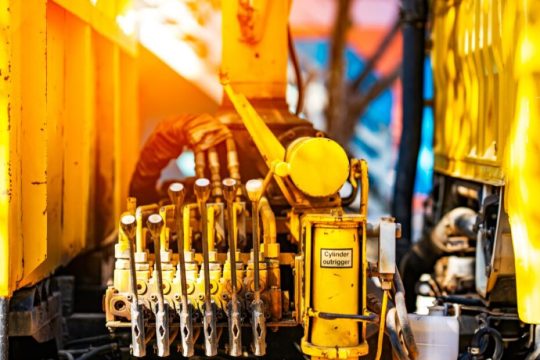#StabilityAnalysis
Explore tagged Tumblr posts
Text
Importance of Stability Analysis in Feedback Control Systems: A Comprehensive Guide

In the intricate realm of engineering and automation, where precision and efficiency reign supreme, the significance of stability analysis in feedback control systems cannot be emphasized enough. From regulating the temperature in a chemical reactor to stabilizing the flight of an aircraft, feedback control systems play a vital role in ensuring optimal performance and safety across diverse industries. However, the effectiveness of these systems hinges upon their stability, making stability analysis a fundamental aspect of their design and implementation.
Feedback Control Systems:
At its core, a feedback control system comprises sensors, actuators, and controllers that work harmoniously to maintain desired outputs despite disturbances or uncertainties. The controller continuously adjusts the system’s inputs based on feedback from the sensors, aiming to minimize errors and maintain stability. But what exactly does stability entail in this context?
Stability and Feedback Control Systems:
In simple terms, stability refers to a control system’s ability to return to a desired state following perturbations or disturbances. For example, think of a thermostat maintaining room temperature: if it consistently overshoots or undershoots the setpoint, occupants would experience discomfort, highlighting the importance of stability in achieving reliable outcomes.
Stability analysis involves assessing a control system’s behavior under various conditions to determine its stability characteristics. This analysis typically involves mathematical modeling, simulation, and techniques such as root locus, Nyquist criterion, Bode plots, and frequency response analysis. By scrutinizing the system’s dynamics, engineers can identify potential instability issues and devise corrective measures to enhance performance and reliability.
So, why is stability analysis indispensable in the realm of feedback control systems?
Here are several compelling reasons:
1. Performance Optimization: - A stable control system exhibits predictable and consistent behavior, allowing engineers to fine-tune its parameters for optimal performance. - By analyzing stability margins and response characteristics, engineers can identify opportunities to enhance control system performance, such as reducing settling time, improving disturbance rejection, and minimizing overshoot.
2. Safety Assurance: - In safety-critical applications like nuclear reactors and autonomous vehicles, unstable control systems pose risks to human lives. - Stability analysis ensures the safety and reliability of these systems by preemptively identifying instability issues and implementing robust control strategies to mitigate risks.
3. Robustness Enhancement: - Real-world systems are often subject to uncertainties, nonlinearities, and external disturbances that can destabilize control loops. - Stability analysis allows engineers to assess control system robustness against uncertainties and design controllers capable of maintaining stability across a wide range of operating conditions.
4. Fault Diagnosis and Prevention: - Instabilities in control systems can arise from component failures, sensor inaccuracies, or environmental changes. - Monitoring stability over time enables engineers to detect anomalies indicative of potential faults or degradation, facilitating proactive maintenance and preventing catastrophic failures.
5. Cost and Time Savings: - Detecting and resolving stability issues early in the design phase can save significant time and resources by avoiding costly redesigns, reworks, and downtime associated with unstable control systems. - Thorough stability analysis upfront streamlines the development process, accelerates time-to-market, and enhances competitiveness.
Conclusion:
In conclusion, stability analysis is a cornerstone of effective feedback control system design and implementation. By rigorously examining stability characteristics, engineers can optimize performance, ensure safety, enhance robustness, facilitate fault diagnosis, and ultimately drive innovation across industries. As technology advances and demand for precise and reliable control systems grows, the importance of stability analysis remains unwavering, guiding engineers toward safer, more efficient, and more resilient solutions. If you want more articles related to these type of topic so visit here👉PujaControls
#automation#labview#plc#labviewsoftware#technology#software development#FeedbackControlSystems#StabilityAnalysis#IndustrialAutomation#EngineeringEfficiency#ControlSystemDesign#SafetyFirst#RobustControl#FaultDetection#OptimalPerformance#PrecisionEngineering
0 notes
Text

Unleashing Precision: Step inside the ROCCH Stability Test Chamber - Where Innovation Takes Flight!
Click Here For More:- https://bit.ly/43LMi7C
#RochStabilityTest #ChamberTesting #StabilityChamber #RochTestChamber #StabilityTesting #LabEquipment #QualityControl #EnvironmentalTesting #StabilityAnalysis #PharmaceuticalTesting #LifeScience #ResearchLab #ScientificEquipment
#RochStabilityTest#ChamberTesting#StabilityChamber#RochTestChamber#StabilityTesting#LabEquipment#QualityControl#EnvironmentalTesting#StabilityAnalysis#PharmaceuticalTesting#LifeScience#ResearchLab#ScientificEquipment
0 notes
Video
vimeo
Control Charts and Stability Analysis
#Vimeo#controlchart#stabilityanalysis#qimacros#jayarthur#knowware#controllimits#sigmalines#unstablepoint#unstabletrend
0 notes
Video
vimeo
Control Charts and Stability Analysis
#Vimeo#controlchart#stabilityanalysis#qimacros#jayarthur#knowware#controllimits#sigmalines#unstablepoint#unstabletrend
0 notes